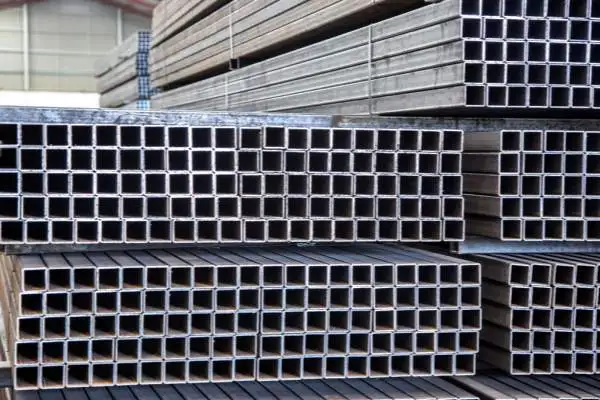In industrial applications, cold-drawn seamless steel pipes are regarded as the "blood vessels" of equipment and systems. Known for their high strength, excellent dimensional accuracy, and superior corrosion resistance, these pipes play a vital role in various high-performance scenarios. Given their widespread use and critical importance, ensuring the quality of cold-drawn seamless steel pipes is essential.
High-quality pipes can enhance the safety and stability of operations, reduce maintenance and failure rates, and extend service life. Conversely, substandard pipes may cause severe issues such as leakage or rupture, leading to costly damages and operational hazards.
This article outlines practical methods to assess and identify the quality of cold-drawn seamless steel pipes.
Super Steel Manufacturing Co.,Ltd is professional cold drawn seamless steel pipes manufacturer, for more details, please contact:sales@super-steels.com
1. Visual Inspection: The First Step in Quality Assessment
Appearance offers an intuitive way to judge overall product quality. A simple visual inspection can help reveal obvious defects or process issues.
Key indicators:
Surface finish: The pipe surface should be smooth and free from scratches, dents, pores, or other visible flaws. Roughness may indicate poor cold drawing or inadequate pickling.
Oxide scale and rust: Quality pipes should be free from visible rust or heavy oxide layers. Residual oxide scales can compromise corrosion resistance.
Cracks and cavities: Carefully inspect the pipe ends and welded sections for cracks, bubbles, or pinholes.
Straightness and warping: A quality cold-drawn pipe should be straight without bends or waves, which can impact installation and mechanical integrity.
2. Dimensional Measurement: Ensuring Precision
One of the main advantages of cold-drawn pipes is their high dimensional accuracy. Measuring key parameters is essential for verifying product consistency.
Primary checkpoints:
Outer diameter and wall thickness: Use calipers or micrometers to ensure measurements meet design tolerances. Cold-drawn pipes typically have tighter tolerance ranges.
Length tolerance: Especially for applications requiring fixed lengths, confirm that the pipe meets specified length standards.
3. Mechanical Properties Testing: Verifying Load Capacity
Mechanical strength is crucial to determining how well the pipe can withstand stress during use.
Common tests:
Tensile and yield strength: Ensure the pipe meets required load-bearing standards through tensile testing. Cold-drawn pipes typically offer higher tensile and yield strengths.
Elongation: Indicates ductility and toughness. A higher elongation percentage suggests better performance under stress.
Hardness test: Conduct hardness measurements to evaluate the balance between strength and machinability. Excessive hardness may lead to brittleness, while low hardness may reduce load capacity.
4. Non-Destructive Testing (NDT): Examining Internal Integrity
NDT methods provide insights into internal defects that are invisible to the naked eye, ensuring comprehensive quality assurance.
Common NDT techniques:
Ultrasonic Testing (UT): Detects internal flaws like cracks, voids, and inclusions. Widely used for steel pipe quality checks.
Radiographic Testing (X-ray/RT): Suitable for identifying deep or large internal defects, especially in welded areas.
Magnetic Particle Testing (MT): Effective for detecting surface or near-surface cracks, ideal for applications requiring high surface quality.
Penetrant Testing (PT): Reveals surface imperfections such as microcracks or porosity, particularly in smooth-surfaced pipes.
5. Wall Thickness Uniformity: Maintaining Structural Balance
Consistent wall thickness is vital for performance under pressure. Variations may result in weak spots and potential failure.
Method:
Multi-point wall thickness measurement: Check different pipe sections to ensure uniformity within permissible tolerance limits. Uneven thickness may point to process or equipment issues.
6. Hardness and Machinability: Key for Downstream Processing
Hardness affects how the pipe responds to machining or welding.
Assessment:
Hardness testing: Use Brinell, Rockwell, or Vickers methods depending on the application. Suitable hardness levels ensure ease of fabrication and structural reliability.
7. Annealing Quality: Internal Structure and Stress Relief
Proper annealing directly impacts the pipe's internal stress distribution, plasticity, and mechanical properties.
Evaluation criteria:
Microstructure inspection: Use a metallurgical microscope to check for uniform grain structure and the absence of overheating or abnormal phases.
8. Supplier Quality Documentation: Trust but Verify
Reputable manufacturers provide documentation to prove compliance with standards and customer specifications.
Typical documents include:
Material Certificate: Verifies chemical composition and material grade.
Mechanical Property Test Report: Confirms tensile strength, yield strength, elongation, etc.
NDT Report: Documents the results of internal and surface defect inspections.
Conclusion: A Multi-Faceted Approach to Quality Assurance
Identifying the quality of cold-drawn seamless steel pipes requires a comprehensive strategy. From appearance to mechanical tests, and from dimensional measurements to non-destructive testing, every step plays a role in ensuring reliability.
Avoid relying on a single indicator. Instead, use a combination of visual checks, physical measurements, structural testing, and supplier documentation to make informed purchasing decisions. Only by thoroughly evaluating these factors can you select steel pipes that truly meet your project's safety, performance, and longevity requirements.



 English
English Español
Español Français
Français بالعربية
بالعربية





















